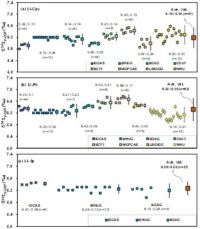Our Location
304 North Cardinal St.
Dorchester Center, MA 02124
Isotope geochemical tracing involves using variations in stable isotopes and the isotopic composition of precursor substances in reflective isotopes to understand the genesis and origin of rocks, minerals, and fluids.

Isotope geochemical tracing involves using variations in stable isotopes and the isotopic composition of precursor substances in reflective isotopes to understand the genesis and origin of rocks, minerals, and fluids. It is a quantitative discipline with highly significant and widespread applications in many areas of Earth science and planetary science.
The rise of stable isotope research is closely tied to the development of modern physics in the first half of the 20th century, with the true historical beginning occurring in 1947 when Urey published The Thermodynamic Properties of Isotopic Substances. Historically, stable isotope studies primarily focused on the abundance and variation mechanisms of stable isotopes of light elements (H, C, O, S, and N) in nature. In the late 1990s, with the advancement of MC-ICP-MS technology, stable isotope systems of other elements gained attention in the academic community. These were referred to as non-traditional stable isotopes—a term that distinctly reflects the era, illustrating the significant impact of instrument and analytical technology developments on scientific research.
The study and application of radioactive isotopes is a vast field encompassing areas such as medicine, environmental science, energy engineering, and geology. In geochemistry, it primarily involves using the isotopic composition changes in radioactive precursors within systems like Rb-Sr, Sm-Nd, Lu-Hf, Re-Os, and U-Th-Pb to trace rock formation, ore source, and mineralizing fluid properties, addressing key scientific issues.
LA-MC-ICP-MS and SIMS are currently the primary techniques for high-precision, high spatial resolution analysis of various radioactive and stable isotopes. In response to the challenges of isotope fractionation and matrix effects during the testing of complex geological samples, we have developed a series of micro-area solid isotope analysis reference materials. These high-quality reference materials will provide crucial support for the development of micro-area isotope analysis technologies.